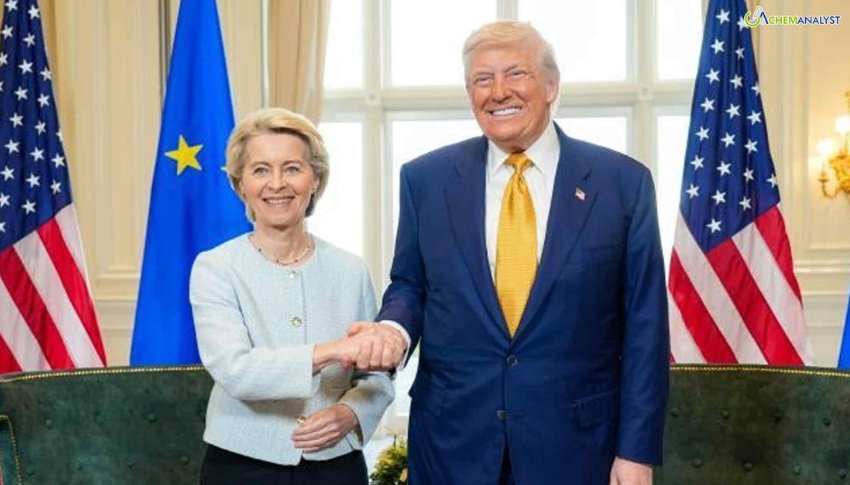Welcome To ChemAnalyst

European Commission President Ursula von der Leyen and US President Donald Trump announced a significant trade agreement on July 27, 2025.
In a move set to redefine transatlantic economic relations, European Commission President Ursula von der Leyen and US President Donald J. Trump officially unveiled a groundbreaking trade deal on July 27, 2025. The agreement aims to restore stability and predictability in a relationship that saw over €1.6 trillion in goods and services exchanged in 2024. This figure, representing over €4.2 billion daily, underscores the deeply interwoven economies of the two blocs, further solidified by €5.3 trillion in mutual investments in 2022.
The core of this political agreement revolves around several key commitments from both sides. A cornerstone is the establishment of a single, all-inclusive US tariff ceiling of 15% for the vast majority of EU goods. Effective August 1, this ceiling will replace previously stacked tariffs, including the US Most Favored Nation (MFN) tariff. Notably, this 15% cap extends to cars and car parts which currently face tariffs of up to 25% plus a 2.5% MFN tariff. The agreement also anticipates this ceiling applying to future tariffs on pharmaceuticals and semiconductors, contingent on US Section 232 decisions.
Beyond the generalized tariff ceiling, the deal provides special treatment for strategic products. As of August 1, US tariffs on EU aircraft and aircraft parts, certain chemicals, specific drug generics, and natural resources will revert to pre-January levels.
A significant aspect of the agreement addresses the global challenges faced by the steel, aluminium, and copper sectors due to unfair and distortive competition. The EU and US will establish tariff rate quotas (TRQs) for EU exports at historic levels, drastically cutting current 50% tariffs.
The agreement also introduces liberalized trade from the US into the EU, projected to save EU importers and consumers approximately €5 billion annually in duties, all while safeguarding core EU industrial and agricultural sensitivities. This includes the elimination of already low duties on industrial goods from the US.
Furthermore, the deal promises better access to the EU market for limited quantities of US fishery products - Alaska pollock, Pacific salmon, and shrimp. Similarly, improved market access will be granted for certain non-sensitive US agriculture exports worth €7.5 billion, encompassing products like soybean oil, planting seeds, grains, nuts, and processed foods.
Beyond tariffs, the agreement focuses on reducing non-tariff barriers through cooperation on car/automotive standards and SPS (sanitary and phytosanitary) measures.
A notable commitment from the EU is its intention to procure US liquified natural gas, oil, and nuclear energy products valued at an expected $750 billion (approximately €700 billion) over the next three years, replacing Russian energy sources. The EU also plans to purchase €40 billion worth of AI chips, vital for maintaining its technological edge.
We use cookies to deliver the best possible experience on our website. To learn more, visit our Privacy Policy. By continuing to use this site or by closing this box, you consent to our use of cookies. More info.
